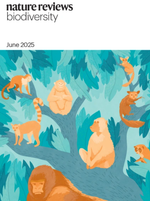Science
Joseph L.-H. Tsui1, John T. McCrone, Ben Lambert, Sumali Bajaj, Rhys P.D. Inward, Paolo Bosetti, Rosario Evans Pena, Houriiyah Tegally, Verity Hill, Alexander E. Zarebski, Thomas P. Peacock, Luyang Liu, Neo Wu, Megan Davis, Isaac I. Bogoch, Kamran Khan, Meaghan Kall, Nurin Iwani Binti Abdul Aziz, Rachel Colquhoun, Áine O’Toole, Ben Jackson, Abhishek Dasgupta, Eduan Wilkinson, Tulio de Oliveira, The COVID-19 Genomics UK (COG-UK) consortium, Thomas R. Connor, Nicholas J. Loman, Vittoria Colizza, Christophe Fraser, Erik Volz, Xiang Ji, Bernardo Gutierrez, Meera Chand, Simon Dellicour, Simon Cauchemez, Jayna Raghwani, Marc A. Suchard, Philippe Lemey, Andrew Rambaut, Oliver G. Pybus, Moritz U.G. Kraemer
View Journal Article / Working PaperThe severe acute respiratory syndrome coronavirus 2 pandemic changed character with the emergence of the Omicron lineage in South Africa in 2021. This lineage showed elevated transmissibility and increased immune evasion. Tsui et al. traced the history of the introduction of this variant in the United Kingdom, where exceptionally comprehensive genetic sampling regimes were established. The authors found that the virus had been introduced undetected into England between 5 and 18 November 2021, and South African scientists alerted the World Health Organization on 22 November 2021. However, by the time the UK government had responded, the variant had already spread between UK cities and globally. Therefore, the subsequent travel restrictions placed on southern Africa were futile.




